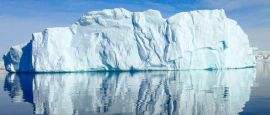Antarctica History, Language and Culture
History of Antarctica
Antarctica is the coldest, driest (its annual rainfall is comparable to that of desert regions) and windiest continent on Earth. It also has the highest elevation.
The main human activity undertaken in Antarctica is scientific research and it was at the British Halley research station that the hole in the ozone layer was discovered in 1985. It was this discovery, perhaps more than any other event, bar nuclear accidents, to bring ecology to prominence in the international political agenda.
The constitutional position of Antarctica is governed by the terms of the Antarctic Treaty of 1959, which came into effect in 1961 and was signed initially by Argentina, Australia, Chile, France, New Zealand, Norway, the UK, Belgium, Japan, South Africa, the USA and Russia. The first seven of these countries have historic claims to the ice-bound continent (none of which were, or are, generally recognised) and the Treaty preserves the status quo, neither recognising nor rejecting the old claims, but forbidding their expansion in any way. The terms of the Treaty also forbid, absolutely, the assertion of new claims. The Treaty applies to all land and ice shelves below 60º South.
A further 38 countries have since signed the treaty.
In May 1994, the International Whaling Commission agreed to the creation of a whale sanctuary around Antarctica below 40º South.
In May 1997, it was suggested by the World Meteorological Organisation that the long-term outlook for the ozone layer over the Antarctic was improving, although it will take some years for this to be conclusively proved. Even depending on a significant reduction of CFCs and other harmful emissions, it is unlikely that the hole will repair itself permanently (if, indeed, it does at all) before 2060 at the earliest.
Antarctica’s first zero-emission research station, Princess Elisabeth, opened in 2009 and runs solely on renewable energy.
Did you know?
• Norwegian explorer Roald Amundsen lead the first expedition to reach the South Pole, on 14 December 1911 a month before the doomed British expedition led by Robert Falcon Scott.
• Mount Erebus on Ross Island in the world’s southernmost active volcano and was the scene of the crash of a New Zealand sightseeing flight in 1979 that killed all 257 people on board.
• There are no indigenous peoples associated with Antarctica, but it is reckoned there is a working population of about a thousand researchers and technicians during winter months, rising to as many as 5000 in the summer.




 You know where
You know where